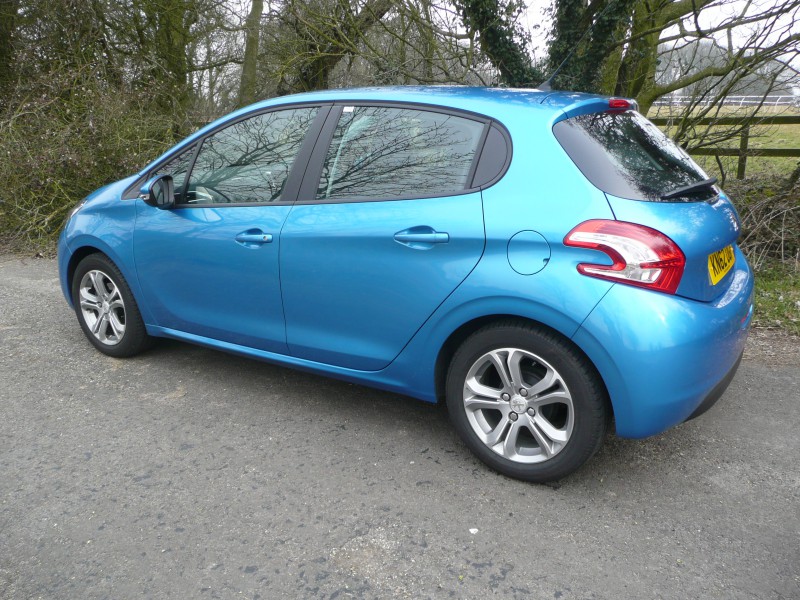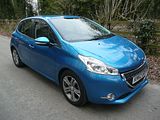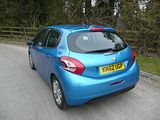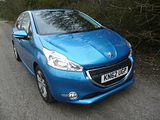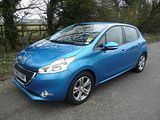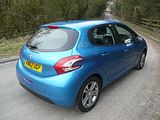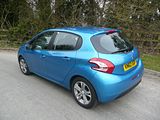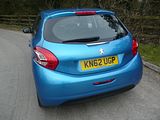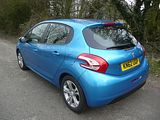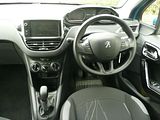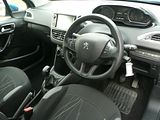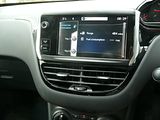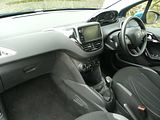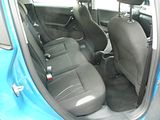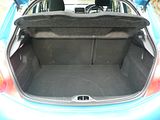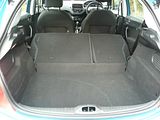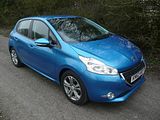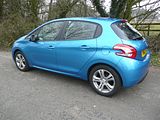Much has been written about the sad changes in Peugeot’s range of cars, from a time when they produced some of the best looking and best to drive affordable cars in Europe in the 1980s and 1990s to the pitiful depths of the 207, 307 and 308 which were in almost everyone’s opinion not only hideously ugly, but very ho-hum to drive and in the case of the 307 beset with terrible reliability issues which mean that all three models have lounged more at less at the bottom of the annual JD Power survey. Even the French started to switch their allegiances elsewhere. Thankfully, someone at Peugeot decided to do something about it, and they realised that they needed to start with the looks. That meant getting rid of that awful gaping grille that afflicted all models for 10 years. And it also meant making the cars decent to drive again. The RCZ showed that even with the unlikely start point of the mediocre 308 hatch, it was not beyond the abilities of Peugeot designers and engineers to hit their new goal, and the al- new 508 showed that this was not a one shot wonder. Far more significant, though, and critical to get right, was the 207-replacing 208 hatchback, which had the double challenge not only of delivering excellence but coping with the competition of a new Renault Clio which would appear within months of its launch. Few would ever claim that the looks were anything other than a massive step in the right direction, and when “What Car” magazine gave Top Honours to the little Peugeot, it seemed as if whilst they may not quite have recreated 205 magic, they had created a great modern B-segment car. The French certainly seemed to think so, as it leapt straight to the top of the charts, taking full advantage of the delays in the build-up in supply of its most formidable rival.
Those who are used to the latest generation of small petrol engines with their gearing optimised for emissions performance are going to get quite a shock when they fire up the 1.2 motor in this 208. Not only does it rev freely, but in every day driving, I found that you needed to take it far closer to the red line than you would expect, and by so doing, the car feels quite lively. The performance figures will remind you that ultimately this is no ball of fire, but the way it spins could almost convince you otherwise. The second shock for anyone who has not driven a three cylinder engine before is the noise. It is certainly distinctive, and unlike the earlier 3 cylinder Polo which I likened to having a swarm of angry wasps under the bonnet, this one does not sound too unpleasant. It is quite loud, though, but the overall impression is that as long as you drive it almost like an old-school Italian car, ie like you stole it, you will do fine. Well, you will be fine at your cruising speed on the motorway, at which point the wind and road noise overpower the engine noise, but the moment you need a slug of acceleration then you will be reminded that this is a small and not that torquey engine. You will need to reach for the gears for assistance. Sadly, the gearchange is still not very good, though it is an improvement on that in the 207. It feels quite baulky when going from first to second, and there is still too much slop in the lever. The travel between the gears is far greater than just about any car I have recently driven. Reverse is opposite fifth, but there did appear to be sufficient of a detent that you would be unlikely to select it when trying to find a non-existent sixth speed. However, the quality of the change was less of a problem than the clutch take up. I would like to think that this was a problem confined to my test car, but the clutch biting point was very close to the top of travel of the pedal, which made smooth starts from rest very difficult to judge. The feel to the pedal was not exactly confidence inspiring, either. That was nothing compared to the brakes, though, which needed an almighty shove on a very mushy feeling pedal to affect any form of retardation. A conventional pull-up handbrake is fitted between the seats. I would love to say that the 208 redeemed itself with its steering and handling, but it did not. The steering is quite light, and feels rather, or rather it does not feel much at all around the straight ahead. Wind on some lock and it does get better, but this is definitely no Fiesta to drive. The handling was less troubling, though my drive consisted of plenty of motorway and only a few miles on a slightly twisty A road, so more experience would be required before making a definitive pronouncement. At least the ride was decently good, and visibility was not a problem, despite the fact that the door mirrors are mounted well back on the doors and appear quite small. The on-board display showed some very impressive looking fuel consumption figures, suggesting that on the motorway, the little Peugeot was averaging over 60 mpg. When I filled it up, though and did the maths, the average came out at just 41.4 mpg. As I only used part of a tank, though, there has to be a disclaimer that this figure could be affected by how truly full the car was when I collected it.
Peugeot have certainly tried to do something different with the dashboard on the 208. I am not convinced that they have succeeded in doing something good, though. The steering wheel is tiny, far smaller than on any regular car I can recall, and this means that you look over it at the instrument nacelle. Except in my case you look over it and see the top half of the instruments, but the bottom portion is right in line with the wheel, so an ergonomic fail straight away. Luckily, there is a digital repeater for the speedometer set between that dial and the rev counter, so you can at least be sure of the speed at which you are travelling. The larger pair of dials are flanked by a smaller fuel gauge and water temperature gauge. The centre of the dash contains the display screen for the audio unit, and other on-board information. It is touch sensitive, and whilst this does mean that an awful lot of buttons have been removed, changing radio channels to one that was not pre-set was unduly fiddly. Beneath this are the dials and buttons for the air conditioning system. Chunky column stalks operate lights, wipers and indicators, and there are repeater buttons on the steering wheel hub for audio unit functions. The materials quality is generally good, with plenty of soft touch plastics deployed. There is considerable use of gloss black finishing around the instruments and on the top surface of the dash, with a slightly odd chrome end piece which looked a bit out of place. Biggest problem though is the fact that there were a lot of unwanted reflections, especially from the passenger side of the dashboard in the windscreen, and this was even on a not exactly sunny day.
Despite being a relatively basic model, there was a height adjuster on the driver’s seat, which allowed me to lower my perch quite considerably. Along with the adjuster on the steering column, I was able to get a generally good driving position, unlike the difficulties in the 206 and 207 predecessors, though as I could not see all the instruments properly, you could say that the ergonomics are still flawed. At least I was comfortable. Rear seat passengers should not have too much to complain about for a car of this size, either, with easy access and decent levels of leg and head room. This is really only a car for 4 adults, though three children would fit across the rear seat and indeed three belts are provided. The boot is a reasonable size, though my suitcase and lap top bag did more or less cover the floor area. It is deep enough that you could have put a second pair of these items on top and still left the parcel shelf in situ. The rear seat backrests are asymmetrically split and they do fold down to increase luggage space. The rear cushions do not lift, though so the resulting space is not flat. Inside the cabin, oddments space is meagre with a particularly pokey glovebox, far smaller than the lid would lead you to believe, small door bins and a little place in front of the gearlever.
The test car was in Active spec, which sits above Access, Access+ and below Allure and Feline in Peugeot’s hierarchy. It featured a slightly odd mixture of things that were present and which were missing. Most obvious thing that was not there was a remote for the central locking, so the only way to lock and unlock the doors was to put the key in the lock. The fuel flap also had to be unlocked manually. And yet, you get a touch sensitive screen for the audio unit. Looking at the official specs for the different models, then the main differences between Active and Access+ are that the former has 15″ alloys rather than steel wheels, front fog lights, a DAB radio with that touch screen, USB port and bluetooth, and it has split folding rear seats. The Access+ brings body coloured door mirrors, electric and heated door mirrors and one touch to the driver’s electric window and air conditioning that are all lacking on the basic Active model. The basic model offers electric front windows, cruise control and wheel mounted controls for the radio/CD player. The spec sheet says that it has remote central locking, so my guess is that perhaps the fob was missing on my rental car, rather than the model not featuring the capability. The Allure brings dual zone climate control, a leather wrapped steering wheel, the visibility pack which includes automatic wipers and lights, sports seats, 16″ alloys and quite a few trim differences. Top spec Feline models, available only with 5 doors have 17″ alloys, a glass sunroof, half leather covered seats, satellite navigation, an upgraded audio unit and some more trim differences. Coming soon is the XY model, in 3 door format, as well as the sporting GTi. Factor in the variety of different engines available – 1.0i, 1.2i, 1.4i and 1.6i petrols and the 1.4 HDi and 1.4 eHDi and 1.6 eHDI diesels and there is quite a range of 208s from which to choose. The options pages of the brochure would appear to allow a significant degree of personalisation, as well, with colours, wheels and all manner of additional equipment that can be added. List price for the 1.2 VTi Active 5 door as tested was £12,395 which undercuts the equivalent Fiesta 1.25 82 bhp Zetec, the Corsa 1.2 S, the less powerful Polo 1.2S, all bar the cheapest less potent 1.2 new Clio, but not the latest Punto or Citroen C3.
Having been a real fan of Peugeot until the decline of the late 1990s, I did so want the 208 to be good. Without question, it is a significant improvement on the woeful 207, but then that car really was a bottom of the class offering right from the outset. But standards are high even at the cheaper end of the motoring spectrum, so to score maximum points, a car even at this price level needs to be little short of excellent in all regards. The 208 does not achieve that. I think its pert looks are quite appealing, it is roomy enough and the interior appears, at face value to be nicely constructed and presented, but the dynamic flaws in this model are such that I really cannot recommend it. The engine note I could easily get used to, and would probably even quite enjoy, but the awkward clutch take up, the mushy brakes and the over-assisted steering are all dynamic flaws that I would find hard to accept and which you just don’t find in some of the 208’s competition. Although I am not quite as besotted with the Fiesta as the UK motoring press seem to be, it is still a very capable car, with nothing significant wrong with it, and at least until I have sampled the latest Clio, Polo, Rio and Yaris, it remains the pick of the B-segment superminis in my opinion.

